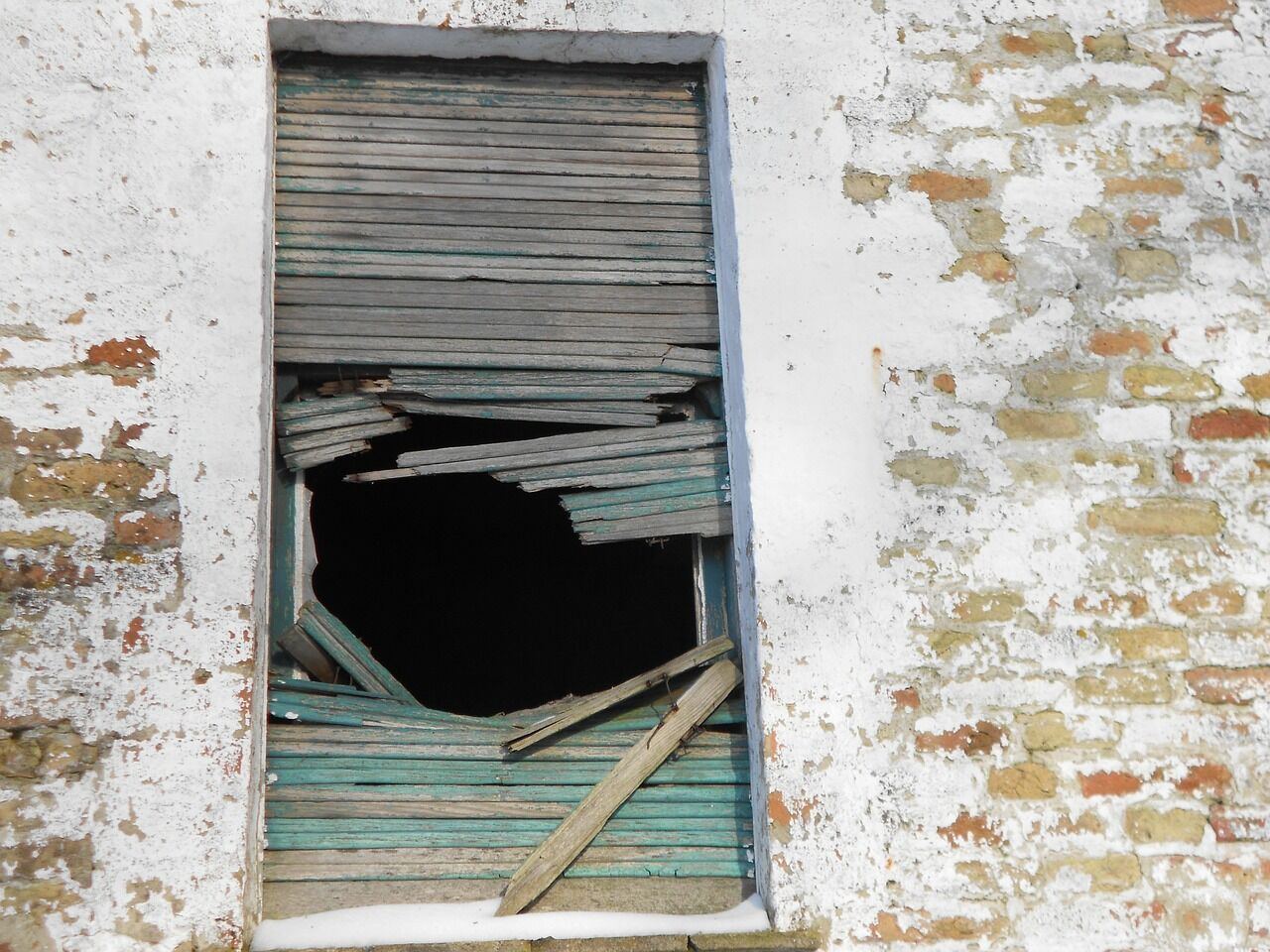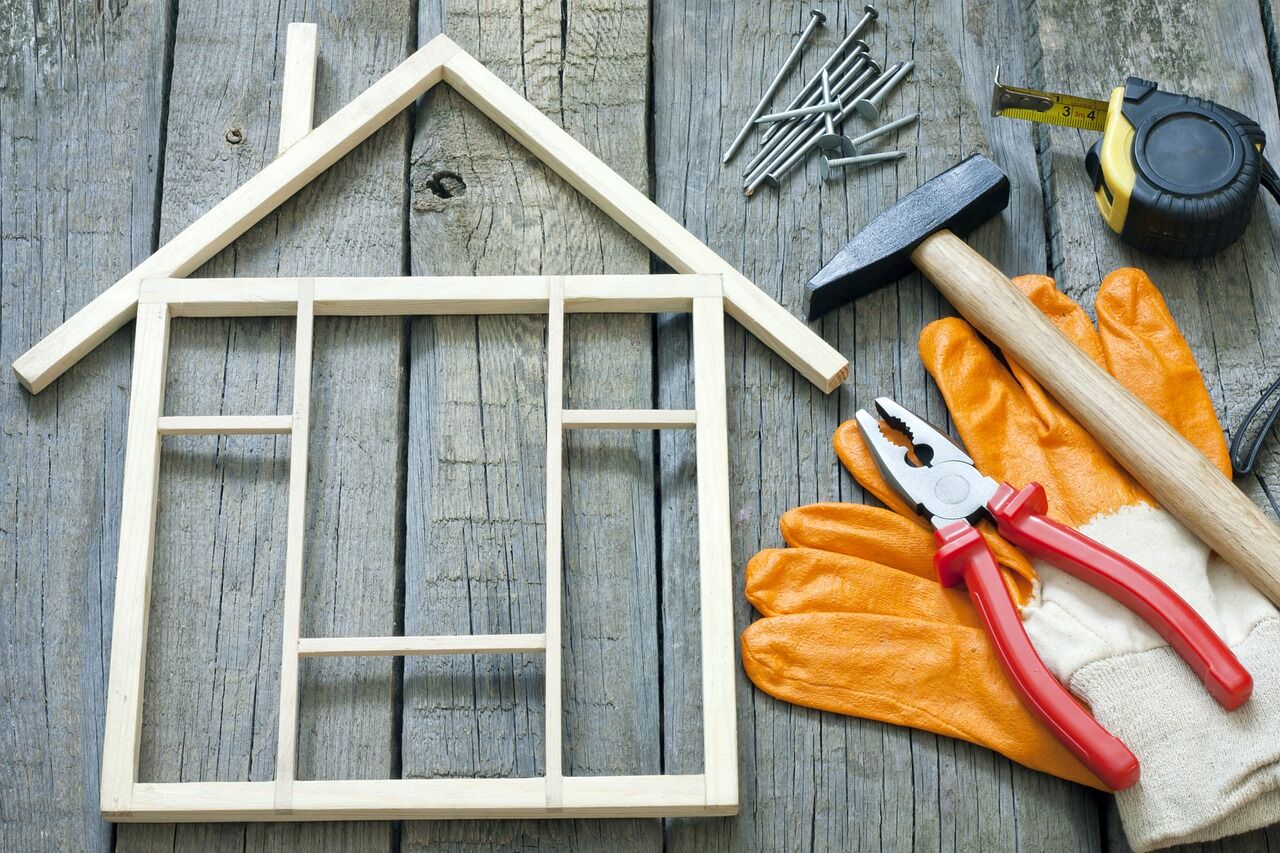Thinking About Jumping on the Fixer-Upper Trend? 7 Questions to Ask First
Published on Wednesday August 30, 2017
Image Source: HGTV and Larsen & Talbert Photography
Home improvement can be a way of life. HGTV gurus like The Property Brothers and Chip and Joanna Gaines have made a very solid living off of buying, fixing, and selling homes over and over again.
They make it look pretty glamorous, right?
When you purchase a fixer-upper — either as a home for your family or as a real estate investment — you have some long days and hard decisions in your future. You’re just hoping that sweat equity pays off down the road.
If you’re thinking about buying a fixer-upper to save money on a home investment, like the Schipanis did in Columbia Heights near Washington D.C., or TRF Development Partners are doing in Baltimore, Maryland, there are quite a few things to consider.
While investing in existing housing is a great way to maintain and improve your city’s neighborhoods, you do not, however, want to get stuck with a house that will bleed you dry before you ever finish the home improvement job.
Let’s look at ways you can make sure the home you purchase for renovation is a real fixer-upper — not a lost cause.
7 questions you need to ask before you sign on the dotted line
1. Are the home’s systems (roof, windows, electrical, etc.) in decent shape?

You’ve found your dream home! Sure, it may look a little beat-up, but some minor improvements and a few coats of paint should do the trick, right?
Maybe. Unfortunately, some of the most expensive home repairs may not be visible during a basic walk-through. If you need to update hazardous knob-and-tube electrical wiring that was popular in the late 19th- and early-20th century, or replace an Orangeburg sewer pipe that’s long outlived its 50-year life expectancy, your project could cost tens of thousands of dollars.
Tip: Take a close look at the roof!
You and your home inspector must examine the whole roof system closely since a roof replacement can cost anywhere from a few thousand dollars to more than $14,000. Keep in mind that it could cost even more depending on the type of materials chosen.
Any issues, from missing shingles to ventilation problems can lead to additional problems like:
- Mold. Mold is ugly, and it can destroy a roof’s underlayment and shingles. Once those two systems are compromised, the rest of the roof — and the house — can be in big trouble.
- Ice dams. Ice dams are often the symptom of ventilation issues. If the roof is holds too much heat, any snow on the deck melts, sending the runoff to gutters. That is, until the runoff freezes, dams up the gutter and pushes all of that water over the lip edge and freezes again (ever see those massive icicles?) or back onto the roof deck, looking for a crack to seep into the home.
- Rot. A roof does not rot on its own! Roof rot is the sign of serious roof failure.
- Structural and foundational damage. If the home’s walls or ceiling are damp or damaged, the basement is prone to flooding or the foundation has problems, the roof may be to blame. How? If water is not being efficiently moved to the gutters and away from the home, it’s going somewhere — maybe the ground near the house, where it soaks into the structure; or maybe into the roof itself, where it finds every nook and cranny in the attic, ceiling and walls.
- Interior leaks. Visible leaks are a clear sign of a failing roof.
The only upside to these roofing issues? If you’re resigned to a major home improvement project, you may be able to negotiate the price of purchase down.
2. How expensive will it be to make the home energy-efficient?

Older homes probably won’t be as energy-efficient as a new build. You can have a home energy auditor evaluate ways to determine upgrades to improve the efficiency of a potential fixer-upper and lower your energy bills.
Installing a new furnace and upgrading appliances are other great ways to improve a home’s energy efficiency. Relatively affordable fixes can also include replacing light bulbs and light switches, replacing toilets, faucets and shower heads, insulating the attic (prevents ice dams, too!) and installing a new furnace, according to Maryalene LaPonsie of Clark.com.
3. What kind of hidden hazards can I expect?

Asbestos and lead-based paint are some of the materials now considered health hazards that used to be common in home construction. Lead-based paint was banned in the 1970s in the United States, but homes built before 1978 still harbor the substance.
Lead paint can be especially harmful to pregnant women and children. Any project that disturbs significant areas of lead paint — from exterior repair projects to interior remodeling and window installation — needs to be carried out by experienced professionals.
You can’t just pull out a paint scraper and slap on a mask. Lead paint removal is regulated by the federal and state government. Serious ramifications come when you break these rules. The U.S. Environmental Protection Agency fined 35 contractors $274,000 after failing to follow federal Renovation, Repair and Painting (RRP) guidelines.
Other environmental concerns in aging or derelict homes can include wood rot, lead pipes and mold. Talk to your agent, your home inspector and appropriate experts about specific home improvement concerns you have.
4. Are there signs of pesky pests?

Neglected homes may become a refuge for insects and critters. In addition to the nightmare factor of finding rats in the basement during a routine home improvement project, pests can damage everything from the structure of a home to its ductwork and insulation.
Squirrels, for example, may look harmless, but these industrious rodents make nests by chewing through insulation, electrical work, PVC piping and more. A dray of squirrels can wreak havoc on a home — especially if they have had the run of the place for months or years.
Squirrels aren’t your only problem, though.
“In a recent paper, researchers from North Carolina State University tried to estimate how many species of insect-like critters (arthropods) could be found in homes,” reports Mike Merchant in Texas A+M’s AgriLife Extension blog.
“They intensively searched 50 North Carolina houses and looked for as many different kinds of living and dead arthropods as they could find. Altogether, they identified 579 different species from 304 different families. In fact, out of the 554 rooms scoured for the research, only 5 rooms had no detectable arthropods at all.”
Gross, right? The worst of the worst, Merchant notes, are termites ($5 billion in property damage a year), powderpost beetles (live in The South, love hardwood), carpenter ants (hollow out wood, insulation, styrofoam and more), rats or mice (filthy disease-spreaders), fire ants (they’ll take out electrical systems), cockroaches (also filthy disease-spreaders) and bed bugs (ruin furniture and your peace of mind).
Here’s where your home inspector will be able to help account for any significant problems caused by pests. Make sure you understand the costs of necessary eradication and repairs projects.
5. Are there local laws or codes that will affect my project?

Giving an old home new life is often a gift that comes wrapped in bureaucratic red tape. Zoning codes, preservation requirements, neighborhood restrictions — in the Land of the Free, we’ve found a lot of ways to tell you what you can or can’t do on your property.
“When you decide to undertake a home improvement project, you probably spend time considering style, color, and whether you’ll need to hire a contractor or architect. But don’t forget one more, especially important step: Determining whether you will need a building permit from your city or county,” writes Allison Nash of Nolo.com. “Building permits are written authorizations issued by a city or county to construct a project. They are required for most construction or remodeling projects, in order to ensure the safety of the work and its compliance with building, construction, and zoning codes.”
This process, Nash notes, can include:
- Submitting a permit application
- Creating a site plan for your project
- Getting plan approval (settle in, this may take awhile!)
- Obtaining the actual permit
- Scheduling routine inspections
- Finishing the project and receiving final approval.
Seems like a hassle? Yes. That’s why you need to research local rules and regulations and talk to neighbors who live in similar homes in the area you’re considering before committing to a fixer-upper you can’t fix.
6. Can I afford this home improvement project?

When embarking on any project in an older home, expect to uncover surprises — not usually the good kind, like a gold ingots squirreled beneath the floorboards — but more likely hidden asbestos or faulty wiring installed by a previous homeowner.
Plan your budget with professionals who have experience working in the type of home you’re considering and can predict possible contingencies to give you a realistic range of expected expenses for the work.
If you plan to sell the home, Mike LaCava of BiggerPockets.com recommends calculating what he calls “the all-important ARV,” or after-repair value. This formula includes:
- The sale price of other homes in the neighborhood, particularly homes that have sold in the last three to six months. Can’t find any examples? That’s a big red flag, my friend.
- If you really can’t find a “comp,” find other homes locally with similar square footage and determine their recent sale prices. Lot sizes and water views are also factors.
- Compare the amenities in those homes to the home you are trying to flip. LaCava makes a point to mention that “bedrooms and bathrooms matter — adjust the price upward or downward based upon bedroom and bathroom numbers” (more is better, of course).
Your costs, on the other hand, will include rehab work, financing and time (time is money!). Include your personal investment and outlays for property taxes, utilities and insurance and realtor-related fees, too.
If you can beat the 70 percent rule — “The 70 percent rule states that an investor should pay 70 percent of the ARV of a property minus the repairs needed,” writes Mark Ferguson at InvestFourMore.com — you should be OK.
7. Do I have the stomach for this?

Bottom line: make sure you’re up for the challenge of moving into a fixer-upper. Buying a house that needs a little love can be an extremely rewarding, but it’s not easy. You may need to live in an unfinished space for awhile. You’re still going to spend serious home improvement money. It’s not a project to take on lightly.
Have a home improvement pro help you prioritize what needs to be done immediately — like a roof replacement or new windows.
A plan, budget and reputable contractors go a long way toward giving you a peace of mind.
Let’s work on your home improvement project together.
Contact Long Roofing online to request an estimate. Ask us about our industry-leading 50-year roofing warranty. We’re happy to help make your fixer-upper the home of your dreams.
We build trust and peace of mind into every Long Roof.
Interested in Long Home Products?
See our special offers now.








